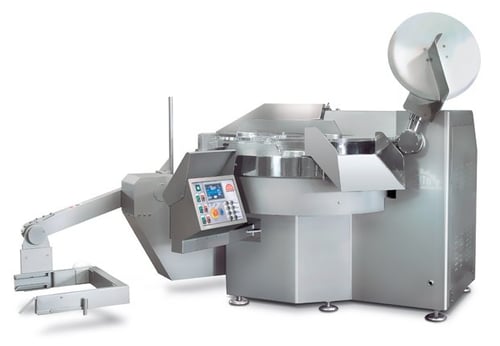Examples of the production of fine paste meat
Industrial grinding, mixing, emulsion... the production of fine paste meat entails a whole series of processes in which technology has a lot to say. Not only when it comes to obtaining maximum efficiency and saving energy resources, but also when it comes to guaranteeing the greatest safety.
There are many processes for the production of fine pastes that meet the demands of the food industry for the production of this type of paste for processed sausages, mortadella, cream cheese and other spreads. Here we show you the most important thing you should know about them.
What to take into account when processing meat into fine pastes
The production of meat into fine pastes must be carried out carefully considering various factors. These processed products, such as Frankfurt sausages or nuggets, but also many others that are formed by emulsion, are presented without appreciable granulometry and are made with a process paste with a very fine structure.
Desired production
The volume of meat to be processed will be a determining factor when choosing the most suitable tool. While the cutters are used to process on a smaller scale, by means of a mobile plate in which the pieces of meat are placed, a professional production and of a size that exceeds that minimum will have to resort to a wide variety of equipment.
The level of automation in the production process
The current food industry requires automation and the latest technology to be competitive, although the professional work of the operators continues to be important. In recent times, considerable progress has been made in improving the efficiency of the passage of food from one equipment to another.
3 examples to produce meat in fine pastes
Using frozen block breakers, industrial meat grinders, mixers and fine paste emulsifiers

Especially in the case of large productions, equipment such as block breakers have a differential value. This is the case of the CBC frozen block breaker, made up of 12 semicircular blades, with a rotary cutting system and the ability to work at a temperature of -20 ºC. In the case of needing an emulsifier to obtain fine pastes with high capacity, a very interesting option is the MC 175-60. It has adjustable chopping plates and blades that prevent overheating of the dough, and it is easily transportable, as it has wheels.
In the grinder section, the POWERGRIND – PA 130 / PA 160 / PA 200, which has two endless axes and can be used with both fresh meat and semi-frozen meat down to -8º. In the case of the line of vacuum mixers, the reliability and robustness of the AV 200 / AV 300 / AV 200E / AV 300E equipment make the difference. They ensure a homogeneous mixture, taking care of the product to later obtain the best sausage. Another great tool, in this case within the category of industrial cutters, is the CT 200 / CT 300 / CT 500 Line, with two versions; one vacuum and one with elevator. It offers rapid emulsification with a complete absence of vibrations.
Produce fine pastes with block breakers and industrial cutters
In this case, it can be frozen meat or fresh meat. Product manipulation is reduced, which favours compliance with food safety requirements. In the case of reduced production, the use of guillotine block breaking equipment can be used.
Combining different equipment according to the product to be produced
Combining the use of various equipment may be the most ideal in the case of small productions and more than one food product at a time. In any case, it is vital to determine what type of product is going to be produced and whether the volume of that production is high or low.
